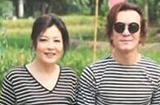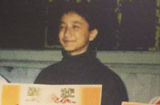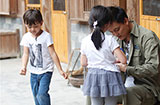推薦的功能型定義
綜合涵蓋以上五個關鍵點,作者給出如下定義:
新聞業是“為獨立追求新近事件的准確信息,並將其原創地呈現給公眾以予啟迪而進行的所有活動”。
雖然作者認為這個定義只是在前人成果基礎上的一次推進嘗試,新的定義還是要經過理論與實踐的不斷檢驗,但描述共識上的進展確實可以幫助細化現有法律制度、協助司法判定的順利進行。更重要的是,這項進展有助於新聞人對於他們的工作活動給出簡明易懂的闡述,並贏得相應的社會信賴和委任,后者無論是對新聞工作的實際操作還是理念支撐都至關重要。
(作者系:上海政法學院新聞系副教授、博士。)
(本文為教育部人文社會科學研究青年項目(編號:12YJC860035)和上海市哲學社會科學基金青年項目(編號:2012EXW002)的階段性成果。《為何大眾化的民主更需要功能型的新聞業定義》(Why democracies need a Functional Definition of Journalism now more than ever)一文原載於Journalism Studies,2014年第15卷第5期。)
注釋:
①LarsonMagali Sarfatti. The Rise of Professionalism: A Sociological Analysis, Berkeley·Los Angeles London: University of California Press. 1977p.X.
②Lewis, S. C.“The Tension Between Professional Control And Open Participation” InformationCommunication & Societyvol.15no.62012pp.836-866.
③NeroneJohn. “The historical roots of the normative model of journalism”Journalism, 2012.0(0)p.2
④王維佳:《追問“新聞專業主義迷思”——一個歷史與權力的分析》,《新聞記者》2014年第2期
⑤白紅義:《塑造新聞權威:互聯網時代中國新聞職業再審視》,《新聞與傳播研究》2013年第1期
⑥牛津辭典將“功能型”定義為:“屬於或者具備特定的活動、目標或者任務……與事物工作或者操作的方式有關。”其同義詞應該是“操作性的”,但后者也同樣容易被誤解。
⑦為了行文方便,Zelizer的分類順序有過微調。其中,“文本”新聞較好的定義是:“無論作者是誰,無論採用的是文字、音頻、視頻還是其他等方式,隻要是對現實或社會生活尚未知曉的新現象、新特征所做的真實陳述或記錄。”(McNair 19984cited by Zelizer 200422)。
參考文獻:
①AdamG. Stuart. 1993. Notes towards a Definition of Journalism: Understanding an Old Craft as an Art Form. St. Petersburg, FL: Poynter Institute for Media Studies.
②Allison, Marianne. 1986. “A Literature Review of Approaches to the Professionalism of Journalists.” Journal of Mass Media Ethics 1 (2): 5-19. doi:10.1080/08900528609358262.
③Barnhurst, Kevin G.and John Nerone. 2009. “Journalism History.” In The Handbook of Journalism Studiesedited by Karin Wahl-Jorgensen and Thomas Hanitzsch17-28. New York: Routledge.
④Berkowitz, Danand Robert E. GutscheJr. 2012. “Drawing Lines in the Journalistic Sand: Jon StewartEdward R. Murrow, and Memory of News Gone By.” Journalism & Mass Communication Quarterly 89 (4): 643-656. doi:10.1177/1077699012456020.
⑤Black, Jay. 2010. “Who is a Journalist?” In Journalism Ethics: A Philosophical Approach, edited by Christopher Meyers, 103-114. New York: Oxford University Press.
⑥BrethourPatrickTim Currie, Meredith Levine, Connie Monk, and Ivor Shapiro. 2012. “What is Journalism? A Report of the Ethics Advisory Committee of the Canadian Association of Journalists.” Canadian Association of JournalistsJune 5. http://j-source.ca/article/what-journalism.
⑦BrinColetteJean Charron and Jean de Bonville. 2004. Nature et transformation de journalisme:Théorie et recherches empiriques. Saint-Nicolas, QC: Les presses de l’université Laval.
⑧Calcutt, Andrew, and Philip Hammond. 2011. Journalism Studies: A Critical Introduction. NewYorkNY: Routledge.
⑨ConboyMartin. 2013. Journalism Studies. New York, NY: Routledge.
⑩Deuze, Mark. 2005. “What is Journalism? Professional Identity and Ideology of Journalists Reconsidered.” Journalism 6 (4): 442-464. doi:10.1177/1464884905056815.
[11]Free Flow of Information Act of 2013 (S.987). United States Senate.
[12]GantScott. 2007. We’re all Journalists Now. New York: Free Press.
[13]Gardner, Howard, Mihaly Csikszentmihalyi, and William Damon. 2001. Good Work: When Excellence and Ethics Meet. New York: Basic Books.
[14]Grant v. Torstar Corp. 2009. SCC 61. Judgment of the Supreme Court of Canada. http://scc.lexum.org/decisia-scc-csc/scc-csc/scc-csc/en/item/7837/index.do?r=AAAAAQAFZ3JhbnQAAAAAAAAB
[15]Greenwood, E. 1957. “Attributes of a Profession.” Social Work 2: 45-55.
[16]Hanitzsch, Thomas. 2011. “Populist DisseminatorsDetached WatchdogsCritical Change Agents and Opportunist Facilitators: Professional Milieusthe Journalistic Field and Autonomy in 18 Countries.” International Communication Gazette 73 (6): 477-494. doi:10.1177/1748048511412279.
[17]HargreavesIan. 1999. “The Ethical Boundaries of Reporting.” In Reporters & the Reported: The 1999 Vauxhall Lectures on Contemporary Issues in British Journalism, edited by Mike Ungersma: 1-15. Cardiff: Centre for Journalism Studies.
[18]Hartley, John. 2000. “Communicative Democracy in a Redactional Society: The Future of Journalism Studies.” Journalism 1 (1): 39-48. doi:10.1177/146488490000100107.
[19]Hindman, Elizabeth Blanks. 2005. “Jayson Blairthe New York Timesand Paradigm Repair.”Journal of Communication 55 (2): 225-241.
[20]IngramMathew. 2011. “Defining Journalism Is a Lot Easier Said than Done.” http://gigaom.com/ 2011/12/15/defining-journalism-is-a-lot-easier-said-than-done/
[21]JobbDean. 2010. “Responsible Communication on Matters of Public Interest: A New Defense Updates Canada’s Defamation Laws.” Journal of International Media & Entertainment Law 3 (2): 195.
[22]Johnstone, John Wallace Claire, Edward J. Slawski and William W. Bowman. 1976. News People: A Sociological Portrait of American Journalists and their Work. Urbana: University of Illinois Press.
[23]KentThomas. 2013. “Who’s a Journalist? Closing in on a Definition.” http://www.huffingtonpost.com/thomas-kent/whos-a-journalist-closing_b_4033856.html.
[24]KinseyMarie. 2005. “Journalism.” In Key Concepts in Journalism Studiesedited by Bob Franklin, Martin HamerMark HannaMarie Kinsey, and John E. Richardson, 124-125. Los AngelesCA: Sage.
[25]KovachBill, and Tom Rosenstiel. 2007. The Elements of Journalism: What Newspeople Should Know and the Public Should Expect. 1st rev. ed. New York: Three Rivers Press.
[26]McLeodJ. and S. Hawley. 1964. “Professionalization among Newsmen.” Journalism Quarterly 41: 529-539. doi:10.1177/107769906404100406.
[27]McNairBrian. 1998. The Sociology of Journalism. New York: Arnold/Oxford University Press.
[28]Mellado, Claudio. 2012. “Major Trends of Journalist Studies in Latin America.” In The Global Journalist in the 21st Centuryedited by David H. Weaver and Lars Willnat413–426. New York: Routledge.
[29]Neron v. Chambre des notaires du Quebec. 2004. SCC 53. Judgment of the Supreme Court of Canada. http://scc.lexum.org/decisia-scc-csc/scc-csc/scc-csc/en/item/2168/index.do?r=AAAAAQAFbmVyb24AAAAAAAAB[30]Reynolds v. Times Newspapers Limited and Others. 1999. UKHL 45. (House of Lords).
[31]RitzerG. 1977. Working: Conflict and Change. Englewood Cliffs, NJ: Prentice-Hall.
[32]Rosen, Rebecca J. 2011. “Why We Should Stop Asking Whether Bloggers are Journalists.” http://www.theatlantic.com/technology/print/2011/12/why-we-should-stop-asking-whether-bloggers-are-journalists/249864/
[33]SchudsonMichael. 2002. The Sociology of News. New York: Norton.
[34]Shapiro, Ivor. 2010. “Evaluating Journalism: Towards an Assessment Framework for the Practice of Journalism.” Journalism Practice 4 (2): 143–162. doi:10.1080/17512780903306571.
[35]SingerJane B. 2003. “Who are These Guys? The Online Challenge to the Notion of Journalistic Professionalism.” Journalism 4 (2): 139–163.
[36]SplichalSlavko, and Colin Sparks. 1994. Journalists for the 21 St Century. Tendencies of Professionalization among First-Year Students in 22 Countries. NorwoodNJ: Ablex.
[37]StephensMitchell. 2011.“Journalism and News: Untangling Their Histories I Beyond News. http://journalism.nyu.edu/publishing/beyondnews/2011/03/13/journalism-and-news-untangling-their-histories
[38]UglandErik, and Jennifer Henderson. 2007. “Who is a Journalist and Why Does It Matter? Disentangling the Legal and Ethical Arguments.” Journal of Mass Media Ethics 22 (4): 241–261. doi:10.1080/08900520701583511.
[39]Wahl-Jorgensen, Karinand Thomas Hanitzsch. 2009. The Handbook of Journalism Studies. New York: Routledge.
[40]WeaverDavid H.and Lars Willnat. 2012. The Global Journalist in the 21st Century. New York: Routledge.
[41]WeaverDavid H.and G. Cleveland Wilhoit. 1986. The American Journalist: A Portrait of U.S. News People and Their World. BloomingtonIN: Indiana University Press.
[42]WeischenbergSiegfriedMaja Malikand Armin Scholl. 2012. “Journalists in Germany in the 21st Century.” In The Global Journalist in the 21st Centuryedited by David H. Weaver and Lars Willnat205–219. New York: Routledge.
[43]Working, Russell. 2013. “Coca-Cola Digital Chief: ‘Kill the Press Release’.” http://www.ragan.com/Main/Articles/47600.aspx
[44]Zelizer, Barbie. 1993. “Journalists as Interpretive Communities.” Critical Studies in Mass Communication 10 (September): 219–237. doi:10.1080/15295039309366865.
[45]Zelizer, Barbie. 2004. Taking Journalism Seriously: News and the Academy. Thousand Oaks, CA: Sage.
[46]Zelizer, Barbie, and Stuart Allan. 2010. Keywords in News & Journalism Studies. New York: Mc Graw Hill.
| 上一頁 |

 分享到人人
分享到人人 分享到QQ空間
分享到QQ空間











 恭喜你,發表成功!
恭喜你,發表成功!

 !
!





















